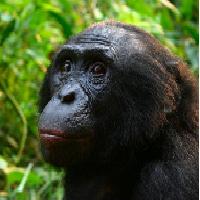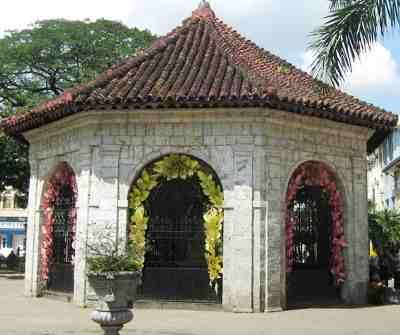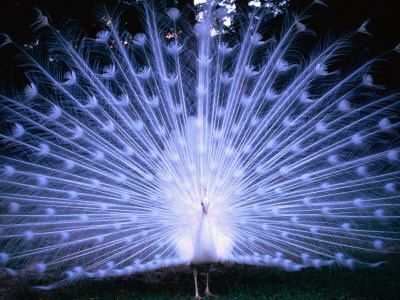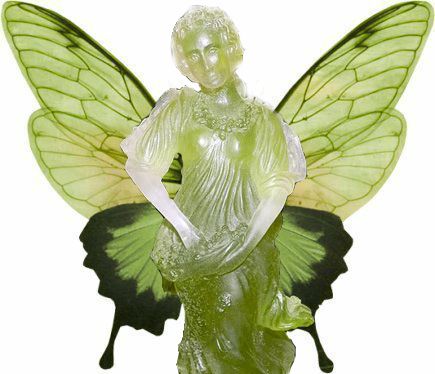Dhani Nest Sskani Nest to Locals  The Nest known as Sskani to the Dhani that live there is relatively hard to find by those who do not know it is there. Hidden as it is by the foliage of the massive trees, their saplings, and a naturally unassuming appearance, it isn't until one gets more than a few yards in that it becomes something so much more. The Sskani Nest is tunneled into a natural cliff, delving deep into the bowels of the earth where the sun can never touch and the silence is as oppressive as the dark. To those captured by the Rattlers of Taldera, the Nest is not much more than a prison where the jailors enjoy causing many different forms of pain and every day people are removed and never returned. To the Dhani themselves, Sskani is a glorified haven away from the too-large Jamoura where the brave and stupid walk into the jaws of death in search of fabled diamonds. Crystals do, however, grow in dank caverns, lit by the blue glow of glow worms and fungus, although they are worthless on any market. The Rattlers find beauty in the crystals that grow in the deepest caverns, they are fond of the quiet, and making morbid tools out of bones isn't so bad on a quiet day. Within Sskani is a most curious shrine to Siku, mother of the Snake-People herself. The Shrine is a source of curiousity to those in the know, although adventurers who delve into Sskani rarely find the shrine in good taste. The Dhani are very fond of sacrifice and tend to do so daily over the shrine, ripping their prey apart in feats of strength that would make even hardened veterans of war cringe in sympathy. The Rattlers of Sskani aren't a sociable bunch and actually despise the giants of Spires. They do pay homage to Caiyha, but merely because she is the mother of Siku. Even so, some Dhani do leave the Nest to explore the wide world, but the menace of Sskani remains just as strong. |
- Getting Started
- Help
- Master Lists
- Useful Links
- Features
[The Spires] The Suggestion Box
(This is a thread from Mizahar's fantasy role playing forum. Why don't you register today? This message is not shown when you are logged in. Come roleplay with us, it's fun!)Built high in the massive branches of Taldera's bloodwood forest, The Spires is a city crafted by the peaceful and scholarly Jamoura. Considered a haven for scholars and sages Mizahar-wide, The Spires is a mecca of philosophy and science that draws people from far and wide with its promise of deeper thinking and higher reasoning.
[The Spires] The Suggestion Box
![]() by Chamaeleon on May 27th, 2012, 6:51 am
by Chamaeleon on May 27th, 2012, 6:51 am
|
Spider, spider. |
- Chamaeleon
- My kiss is poison.
- Posts: 207
- Words: 90951
- Joined roleplay: March 2nd, 2012, 10:11 pm
- Race: Ethaefal
- Character sheet
- Storyteller secrets
[The Spires] The Suggestion Box
![]() by Tiki on May 29th, 2012, 9:09 pm
by Tiki on May 29th, 2012, 9:09 pm
Some notes:
I gave it a read over and didn't have anything strike me as awkward, because I wrote it and we all know that problem. If anyone is looking through and finds something that's unclear, say so! I'll probably be reading back through if this write up is approved for the final Wiki input anyway.
If you can check for any inconsistancies or defiance of Mizahar's natural order in the creates nature, say so. I'd like the life cycle to flow smoothly.
To all our graphic designers, you can clearly see the img here. This img can also be found in my gallery. I'm particularly interested in anyone who can add a live background to the img, resembling Taldera's terrain, some color to the b/w image, and possible a Hahk'Shatar corpse.
Thank you for your time and patience in reading this. Without further adieu, the Nef'Hahk, an abomination to all Caiyha stands for.
I gave it a read over and didn't have anything strike me as awkward, because I wrote it and we all know that problem. If anyone is looking through and finds something that's unclear, say so! I'll probably be reading back through if this write up is approved for the final Wiki input anyway.
If you can check for any inconsistancies or defiance of Mizahar's natural order in the creates nature, say so. I'd like the life cycle to flow smoothly.
To all our graphic designers, you can clearly see the img here. This img can also be found in my gallery. I'm particularly interested in anyone who can add a live background to the img, resembling Taldera's terrain, some color to the b/w image, and possible a Hahk'Shatar corpse.

Thank you for your time and patience in reading this. Without further adieu, the Nef'Hahk, an abomination to all Caiyha stands for.
Last edited by Tiki on June 10th, 2012, 1:39 am, edited 1 time in total.
-

Tiki - The Curious Cat Kelvic
- Posts: 261
- Words: 273835
- Joined roleplay: July 3rd, 2011, 12:32 am
- Blog: View Blog (1)
- Race: Kelvic
- Character sheet
- Storyteller secrets
[The Spires] The Suggestion Box
![]() by Kreig Messer on June 1st, 2012, 11:21 pm
by Kreig Messer on June 1st, 2012, 11:21 pm
|
Feeel thy wrath!!!!
"You gents best be careful, I'm feelin' mighty rabid right now... and your the only ones around to bite"
-

Kreig Messer - The guy in crazy town.
- Posts: 1094
- Words: 883597
- Joined roleplay: January 22nd, 2012, 7:55 am
- Location: Syliras
- Race: Human
- Character sheet
- Storyteller secrets
- Journal
- Medals: 8
-


-


-


-


[The Spires] The Suggestion Box
![]() by Asha on June 5th, 2012, 5:52 pm
by Asha on June 5th, 2012, 5:52 pm
Name: Lorkh’Grapha Frequency: Medium-Low Major features: Lorkh’grapha is a four foot tall plant with a single broad arrow shaped leaf that has a large slit on one side where the stalk attaches to the leaf. The stalk is a light green. The leaf is vibrant in color, a green background with random pink splotches covering it and the leaf veins are a deep magenta. These plants give off a slight fragrant scent much like cloves, and grow together in thick clumps. These plants seem idyllic places to rest beneath for the unwary traveler, but beware, in the Jamouran language lorkh’grapha means endless sleep. The scent they release is actually a strong poison that induces coma if an individual is exposed to it for longer than a full bell. There is currently no known cure for the coma this induces, and it is typically considered merciful to kill any who are found to be locked in the endless slumber. If by chance the individual can be woken before the poison has had a chance to fully set in, they are usually plagued by violent cramps and vomiting for several days. Uses: If one is brave enough to collect the lorkh’grapha leaves, they are very useful for both good and ill intent. Boiling a small strip of leaf in water will create a tea that will help induce a light, dreamless sleep. This medicine should only be prepared by the most experienced of healers as it is easy to overdose a patient. Those with more malevolent intent can create a concentrated poison aptly named ‘Endless Slumber’ by creating an oil extract from the leaf. The oil can be applied to any object that the victim will be exposed to for a moderate duration of time, such as clothing. If the poison is made well it will take effect and send its intended victim into the endless slumber within approximately ten chimes. Most common in: Often found around bodies of water in Taldera, including ponds and swamps. The lorkh’grapha deals well with cold and can be found growing from mid-spring to late autumn. Miscellaneous: When finding someone sleeping beneath the lork’grapha it is often considered polite to drag their body away from the plants. Whether the rescuer chooses to drag them to safety and attempt to revive them or simply kill the person is up to them. Any person that has succumbed to the coma will eventually die of dehydration or malnutrition, the local wildlife will not touch a body poisoned by the lorkh’grapha and typically stay clear of the plants themselves. |
Last edited by Asha on June 12th, 2012, 3:03 am, edited 3 times in total.
-

Asha - Who is really the beast?
- Posts: 211
- Words: 172478
- Joined roleplay: March 30th, 2012, 9:16 pm
- Location: The Spires
- Race: Jamoura
- Character sheet
- Storyteller secrets
- Scrapbook
- Plotnotes
- Medals: 1
-

[The Spires] The Suggestion Box
![]() by Sahashkalila on June 5th, 2012, 8:51 pm
by Sahashkalila on June 5th, 2012, 8:51 pm
|
-

Sahashkalila - I will forge my own path and begin anew.
- Posts: 207
- Words: 129141
- Joined roleplay: March 9th, 2012, 11:30 pm
- Location: Sunberth
- Race: Dhani
- Character sheet
- Storyteller secrets
- Scrapbook
- Journal
- Plotnotes
[The Spires] The Suggestion Box
![]() by Asha on June 8th, 2012, 8:30 pm
by Asha on June 8th, 2012, 8:30 pm
Name: Dawn Flower Vine Frequency: Low Major Features: The dawn flower vine winds its way up trees seeking sunlight. The vine has dark green, heart-shaped leaves about five inches in diameter at their broadest point. Each leaf is spaced about two to three inches apart on the vine. The stalk of the vine is brown and fibrous. The dawn flower grows slowly, only three to five feet per year; however it does not freeze and die in the winter. Instead the vine goes into a dormant stage and when spring comes it picks up its growth where it left off. It takes a very long time for this vine to reach the top of a tree, but when it does it blossoms three to four of the very rare and exquisite dawn flowers. The flower this vine produces is startlingly large, the bud is roughly the size of a human fist and the flower it blooms is approximately one foot in diameter. The dawn flowers have satiny, peach petals with a thin, white border that fade into a bright magenta around the center where golden stamens thrust out. This bloom gives off a subtle, sweet scent reminiscent of honey. This vine only flowers when it reaches the top of a tree and sunlight and the flowers only grow at its highest point. Once the vine has reached its highest point and bloomed flowers two years in a row it quickly withers and dies. Uses: This flower serves a mostly decorative purpose. It is also sometimes used as an offering to Syna by devoted followers and often times blossoms are present during celebrations to the goddess. Most Common In: Central Taldera; also there are also usually a few vines in various stages of growth around the Shrine to Syna in the Spires though it is considered a massive faux paus to pluck flowers from them. Miscellaneous: Finding a blooming dawn flower vine is incredibly rare but the blooms are often sought after by courting individuals of all species to give to their intended lovers as a show of their dedication and bravery. It is widely acknowledged throughout Taldera that anyone seen in the possession of such a flower is either an exceptionally clever and daring individual or are they deeply loved by one. |
Last edited by Asha on June 11th, 2012, 8:14 pm, edited 1 time in total.
-

Asha - Who is really the beast?
- Posts: 211
- Words: 172478
- Joined roleplay: March 30th, 2012, 9:16 pm
- Location: The Spires
- Race: Jamoura
- Character sheet
- Storyteller secrets
- Scrapbook
- Plotnotes
- Medals: 1
-

[The Spires] The Suggestion Box
![]() by Creeper on June 10th, 2012, 2:30 am
by Creeper on June 10th, 2012, 2:30 am
|
[The Spires] The Suggestion Box
![]() by Creeper on June 10th, 2012, 5:11 pm
by Creeper on June 10th, 2012, 5:11 pm
|
[The Spires] The Suggestion Box
![]() by Sahashkalila on June 12th, 2012, 1:25 am
by Sahashkalila on June 12th, 2012, 1:25 am
So this is my rough draft of the shrine. I struggled a bit with the history part, since I was not sure if the Jamoura were one to study the stars, but please feel free to let me know your thoughts and if I need to change anything 

|
Last edited by Sahashkalila on June 12th, 2012, 11:20 pm, edited 1 time in total.
-

Sahashkalila - I will forge my own path and begin anew.
- Posts: 207
- Words: 129141
- Joined roleplay: March 9th, 2012, 11:30 pm
- Location: Sunberth
- Race: Dhani
- Character sheet
- Storyteller secrets
- Scrapbook
- Journal
- Plotnotes
[The Spires] The Suggestion Box
![]() by Creeper on June 12th, 2012, 3:30 am
by Creeper on June 12th, 2012, 3:30 am
|
Who is online
Users browsing this forum: No registered users and 0 guests





 Name: Sittra, The Artist
Name: Sittra, The Artist